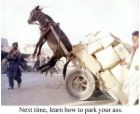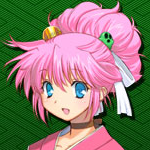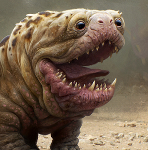Posted 01 August 2008 - 05:03 AM
I decided, finally, to look up the definition of obelisk: Marker, reference point, dagger. Those definitions made me realize that those designated as Obelisk, Chain, etc., by the author himself, then become pivotal characters serving specific roles in each book/plot line. That they turn up as represented by a card in the deck is no surprise, simply because the author needs yet another device to keep the readers' focus appropriately directed.
It also makes me realize that each character whether listed as either holding a position within a house, or as a "function" player specifically does so only so far as the story requires us to view that character, at that particular time, as holding that position. As the story progresses, and as our attention is drawn to different actions by different players at different times the character in those positions changes.
For instance...in one book perhaps Icarium is listed as "Obelisk" and has a card in the deck representing him (Obelisk, naturally). All that means is...hey, pay attention, Icarium is the reference point in this book against which all other actions and characters are measured. In another book Burn might be listed as "Obelisk" and thus becomes the reference point, or pivot upon which the story line turns. Similarly the Unaligned position of "Chain" simply implies yet another function (a major "linking" of characters, plots, events) that can be served by anyone, according to the author's intentions. Placing a character (i.e. Fiddler) in the Deck of Dragons in one of the books, and having him appear as the Chain card is SE's way of saying..."Oh by the way, Fiddler is the one who is linking all these events together so, yoo hoo, pay attention." (That is NOT a spoiler by the way.)
As a matter of fact, each card represents not a static or fixed position, but a particular function at a particular time. Perhaps we could say the "function" is static in that "Chain" always links events/characters/actions, and "Obelisk" is always a reference point - however, we should not be surprised to see any number of characters appearing/listed in any number of house positions, or as represented by an unaligned card, according to the needs of the evolving story line, yet disappearing from that position from book to book, over even within the space of a single book.
Toblaki, for instance, in the book "House of Chains" is listed as Knight in High House Chains. That is not a fixed position (hey you ugly fuck, here's your official HHC Knight decoder ring - and ever more shall be - Amen), and we should not expect Toblaki, necessarily to remain as listed in that position. He's only the Knight insofar as he serves a "knightly" function for HHC during the course of that plot's evolution. Thus there is no conflict between his actions, which might appear to be contrary to the CG's momentary plans (killing a bunch of CG devotees or something similar) and, more importantly, the ultimate consequences of those actions - furthering the goals of the CG during the period covered by this book - as SE sees the CG's place in this enormous story. Toblaki simply moves the CG's plans forward according to some plan that none but the CG (and SE) are aware of.
In the same book (HHC) Anomander Rake is listed as Knight of High House Dark. To me this says NOT that AR is forever in that position because of some inherent right (birth, a job promotion, etc.) but because he serves a knightly role for Mother Dark - her "knight in shining armor" as it were. I wold not be surprised to see someone else in that position, perhaps even for only one book, if that someone better serves the Knightly role for HHD. I know that seems unlikely but I say it to make a point. Similarly Kallor is listed as (?Reaver) of HHC because he "seizes and carries off forcibly, deprives (one) of something, bereaves, robs, plunders" in a manner that serves HHC at the time this book was written. Maybe he'll remain in that position, maybe not - but only so long as he robs, plunders, etc., in a manner which serves HHC. He may be replaced at a later date according to the needs of the story. He is not permanently in that position (neccessarily).
I would go far as to say that all the cards in the Deck of Dragons are nothing more than plot devices, and a means for the author to direct our attention to particular actions within the plot so as to reduce confusion and connect the cast of characters. They all represent functions assigned to characters that, for at least that particular book, establish and define relationships. And those who hold positions within houses may hold those positions for periods of time varying from very short to indefinite, but only so long as the author needs us to know that that character serves that specific house in a particular way. The House position names may be unvarying but those who are assigned those names may vary from book to book.
And isn't this sort of how Dungeons and Dragons is played? SE deals out the cards to various characters, and they have to serve that function - play the hand they were dealt so to speak. Is this what a Dungeon Master is?
IMO.
OHA

 Help
Help














